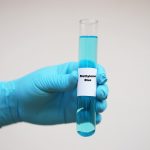
As personal trainers, our training renders us well-versed in the subtleties of tweaking clients’ workouts to accommodate a variety of chronic health issues, of which understanding and recognizing the signs of blood clots fall under this umbrella. While some health situations can be easily observed, others are much more difficult to identify or recognize. As such, it is incumbent upon us to perform our “due diligence” and ascertain any potential health-related pitfalls during an initial client assessment. Blood clots and pulmonary emboli, for example, typically remain masked and silent until they become dangerous and/or a life-threatening situation presents itself. Unless a client reveals that they regularly take blood thinners, it often does not occur to us to ask.
What is a Blood Clot
A blood clot is a cluster formed by platelets in blood plasma that function as little more than a seal to ease bleeding from wounds, internal or external. While we count on them to stem the tide when we incur a cut or more serious injury, unwelcome blood clots can also block blood vessels, thereby impeding or stopping the flow of blood to vital organs such as the brain, heart, or lungs. Often referred to as blood thinners, anticoagulant medications work by interrupting the process of blood clot formation. Classified as a group of pharmaceutical drugs that help prevent blood clots, physicians often prescribe anticoagulants for individuals at a higher risk of developing clots, or to reduce their chances of suffering strokes and/or heart attacks.
The Hazards of Thinning Blood
Patients generally take such prescribed medications daily. Though viewed as life-affirming and often lifesaving, this course of treatment does place the user at an increased risk of heavily bleeding from what others may consider to be an incident requiring minor first aid. Given the injury potential of many sports, trainers and coaches must remain aware not only of a client’s health history, but also manage to plan careful, yet effective, workout programs for such individuals. Falls or injuries that occur during vigorous exercise can cause serious internal bleeding for a client on an anticoagulant. Blows to the head or body can quickly proceed in a dangerous direction. Symptoms of internal bleeding include dizziness, weakness, unusual bruising, bleeding from the nose and gums, or black stool, according to the Agency for Healthcare Research and Quality. Understanding the potential health risks that could accompany such symptoms, personal trainers may wish to exercise caution and steer such clients away from contact sports (such as wrestling, boxing, football, hockey, and even basketball). Safer options may include swimming, walking, jogging, and resistance-training under a watchful eye. Furthermore, some aspects of personal training program may post more risk than benefit in such cases; plyometric box jumps can be substituted with simply modified squat jumps; bodyweight TRX movements may be more safely applied with a similar cable motion. Use your best judgment to determine what exercises or activities might potentially result in some injury.
Understanding the Etiology of Prescription
Another important consideration lies in determining the reason a client takes an anticoagulant medication. This can run the gamut from preventing strokes/heart attacks/blood clots to having had a history of deep vein thrombosis (blood clots that form in the large veins of the limbs), pulmonary embolus (a clot that travels to/develops within the lungs), atrial fibrillation (irregular heartbeat) or after having received an artificial heart valve. In such cases, a cardiologist may have recommended that his client remain active enough to cultivate or maintain a healthy cardiovascular system. Options for effective exercise do indeed exist, such as swapping rides on a rough-terrain mountain bike for a stationary cycle or a Spin class. If the client received medical clearance to cycle outdoors, a prudent trainer will remind him of the importance of wearing a helmet (and potentially elbow and knee support), whether or not he resides in a state requiring the use of protective headgear.
Risks Transcend the Age Range
While we may typically see such situations with our elderly and non-athletic population, these same risks have also been observed in younger, healthy, and generally athletic individuals. The lifestyle of an athlete might seem to paint “the picture of health”; yet several mechanisms do exist that could potentially place them at “higher risk” for developing a clot:
- A disparity between the two systems that balance the clotting process ~ either excessive activity of the proteins and blood platelets that form clots (the procoagulant system), or a dearth of activity within the system that dissolves blood clots as they form (the fibrinolytic system);
- Trauma to the blood vessel wall, which may occur after a bone fracture, not uncommon in athletes;
- Dehydration, which renders the blood “thicker” than usual.
Unfortunately, few studies currently investigate the influence of physical training on blood clot formation and dissolution. We know that anatomically, blood levels of the clotting protein “factor VIII” increase with exercise and persist during recovery. Theoretically, while this could lead to an increased risk of blood clots in athletes, data also indicate that the fibrinolytic system dissolving any potential blood clots also remains in overdrive for avid exercisers. Such arduous activity may confer some protection from developing clots. The net effect of these changes remains in dispute, pending further research and study.
Warning Signs of Blood Clots During Exercise
During a typical hour-long session with a client, the trainer may observe signs that the exercises seem successful. Sometimes, though, a client will begin to complain about some aspects of discomfort (being tired, muscles feeling sore, etc.) While fairly common, especially for a dedicated, hard-working client, keep in mind that the following can also warn of an imminent deep-vein thrombosis or pulmonary embolism:
- Swelling, usually in the leg (can also occur in the arm, especially in weight-lifters, gymnasts, rowers, etc.)
- Leg (or arm) pain or tenderness, usually described as a cramp
- Reddish or bluish skin discoloration
- Leg warm to the touch
- Sudden shortness of breath
- Stabbing chest pain that may worsen with deep breaths
- Rapid heart rate
- Fainting
- Unexplained cough, sometimes accompanied by bloody mucus
We must remain vigilant to these cues, especially in clients whom we know live with a regimen of daily anticoagulant medication. Armed with knowledge, we can feel reassured in assisting such individuals and helping them lead a healthy, confident life.
References
www.livestrong.com/article/500700-blood-thinners-and-exercise/ www.webmd.com/dvt/guide-to-dvt-13/blood-thinner-tips patientblog.clotconnect.org/2011/03/02/athletes-and-blood-clots/ www.healthline.com/health/heart-disease/blood-thinners#4 www.everydayhealth.com/pictures/how-to-steer-clear-of-side-effects-from-blood-thinners/#04 www.stoptheclot.org/news/athletes-and-blood-clots.htm www.ahrq.gov/patients-consumers/diagnosis-treatment/treatments/btpills/btpills.html www.lifebridgehealth.org/Main/FrequentlyAskedQuestionsaboutAnticoagulants.aspx www.outsideonline.com/1811456/running-blood-thinners www.nhs.uk/conditions/Anticoagulant-medicines/Pages/Introduction.aspx







